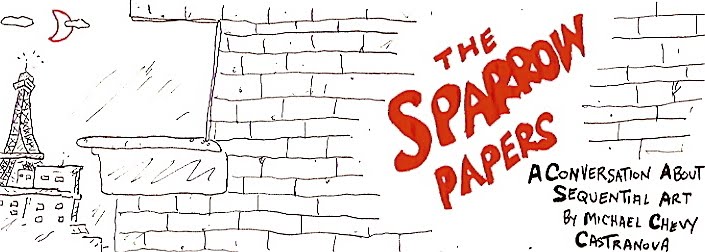 I’ve just finished Seth’s Clyde Fans Book 1 — collected from issues 10-15 of his comic book, Palookaville — and I suppose, all things considered, it’d be too much to hope for a happy ending at the conclustion of Book 2 ….
I’ve just finished Seth’s Clyde Fans Book 1 — collected from issues 10-15 of his comic book, Palookaville — and I suppose, all things considered, it’d be too much to hope for a happy ending at the conclustion of Book 2 ….As with other stories of his, Seth’s pacing is the genius of his work.
Part 1 of this book consists of Abe Marchcard, in 1997, wandering through the offices, the residence above and the basement below of family-owned Clyde Fans, now out of business. He putters, picks things up, puts them down somewhere else, straightens a picture, takes a bath, lights a cigar, prepares supper, goes outside and comes back in, turns on a radio and moves on, for 68 pages — all the while telling us about the company’s history, salesmanship in general and his brother, Simon, in particular.
Part 2 shows Simon attempting to make cold calls in 1957, in the town of Dominion (a regular stopping-off point for Seth characters in others stories). He’s anxious, lacking in self-confidence and sales skill — he’s clearly is not suited to this affable, self-driven line of work. He’s sweating in winter.
Seth punctuates Simon’s movements around town with panels of Abe, testily puffing his cigar — “Are you listening to me, Simon?” “Selling isn’t a game.” “I don’t think you’re up for this.” — to reinforce Simon’s own awareness of his failing. The memories keep intruding.
At one point during his miserable day, Simon stops in a diner and he’s surrounded — in the eatery and on the page — by other patrons talking, talking, talking about their lives, aspirations, opinions and gossip. Simon is desperately trying — belatedly — to create a life. They are living theirs.








